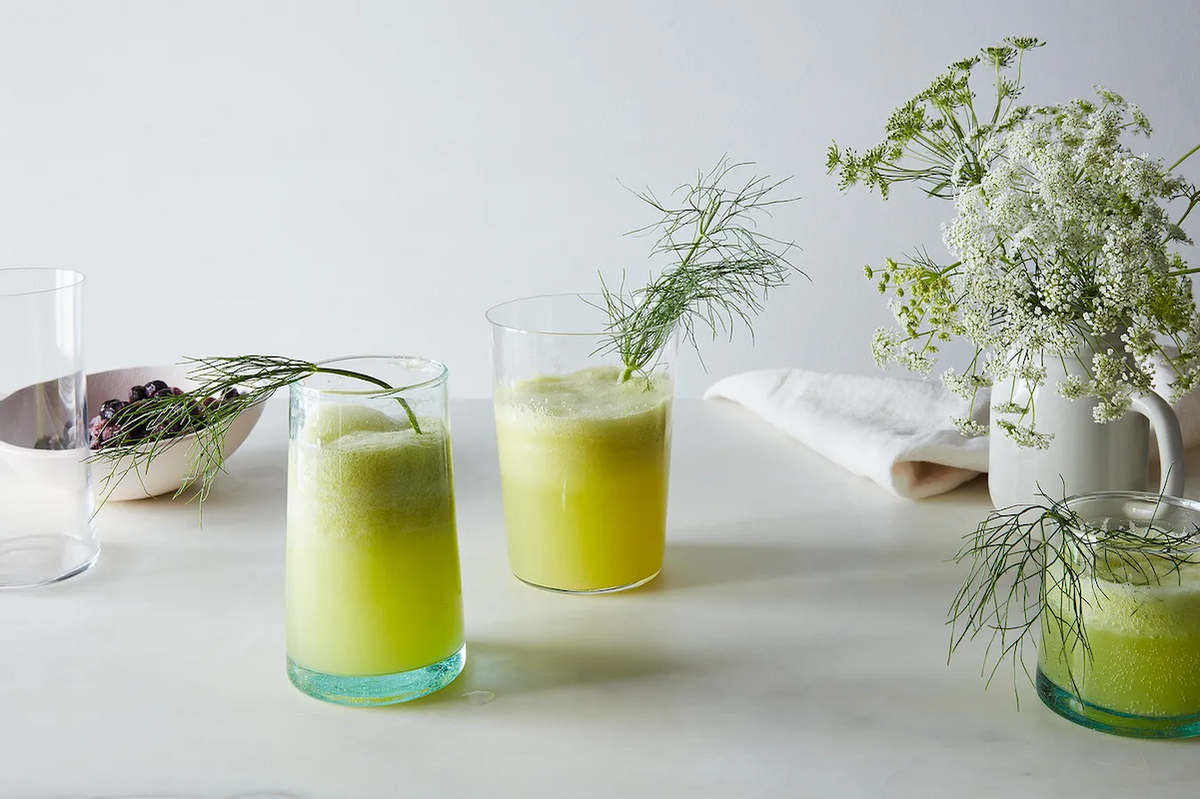Every week we get Down & Dirty, in which we break down our favorite unique seasonal fruits, vegetables, and more.
This week we've got fronds on the brain — fennel fronds, that is. You can find fresh fennel year round, but it really peaks during spring. Once you get your hands on fennel, you'll probably be taken by the pleasant, anise-like aroma and then immediately think to yourself: "OK . . . but what do I do with this?" Because as cool as fennel is to look at, and as lovely as it smells, it's not the most common herb to cook with. Adding crushed fennel seeds to meatballs? Duh! But roasted fresh fennel wedges as part of a weeknight meal? Can't say that's exactly in my repertoire.
So if you want to start cooking with fennel, we'll go over what to look for when selecting fennel, how to store it, and how to use every part of the plant from bulb to stalk to fronds — and more! Licorice haters fear not, there might be hope for you and fennel after all.
What to look for
First things first: select small to medium-sized white fennel bulbs that are heavy and firm with bright green feathery fronds. Avoid bulbs that are really large, have moist spots, or appear shriveled and dried out. If there are brown spots, leave the fennel on the shelf. Bulbs and stalks should be free of cracks, splits, and any discoloration or bruising.
The fennel you buy at the market is also known as bulb fennel, Florence fennel, or finocchio, though due to its similar flavor, it sometimes gets confused with anise. Fact: anise is an entirely different plant, but the two do come together to flavor absinthe. (Think about that the next time you sip one of these.)
As for fennel seeds, you'll find those with other dried spices. For reference, they're a little bit bigger than chia seeds but smaller than cardamom pods. You can use them whole or crush them in a mortar and pestle so they're more powder-like, removing some of the texture while highlighting their pungent earthy flavor.
How to store fennel
Similar to carrots, if you're storing fennel in the fridge, you'll want to separate the stalks from the bulb and store the two parts separately in plastic bags. Because of the delicate nature of the fronds, they tend to go bad more quickly than the bulbs. For a non-plastic-encased option, try storing fennel upright in a cup of water on the counter like a bouquet of flowers. Either way, try to use your fennel within a few days — any more than that, and it starts to lose flavor.
Root-to-stem dining
Like celery, the entire fennel plant can be consumed — there's a ton of flavor in every part of it. Here's how to make the most of every last bit.
Bulb
If you're still craving comfort foods, try roasted fennel on a flatbread, paired with celery in a gratin, or with braised potatoes. To roast fennel, cut the bulbs lengthwise, cut out the core, and slice it as thin or thick as you like. Toss the fennel with olive oil, salt, and pepper, and roast in a 425℉ over for 25 to 30 minutes. Spring can't come fast enough? Then use your fennel bulb in a Greek salad or a shaved salad with celery. If you're not a fan of licorice, ease yourself into fennel's charms by roasting it. Pair it with couscous, or blend it into this white bean dip; roasting fennel will bring out its sweetness and soften its flavor.
Stalks
According to "The Barbeque! Bible," you can dry fennel stalks in the oven to preserve them. Just remove all fronds, and arrange the stalks in one layer on a baking sheet. Bake them at 200°F for 3 hours, then turn off the heat and let them hang out in the oven overnight to finish drying. Mark Bittman suggests grilling fish on the stalks (keep the fronds attached for this one, or use your just-dried stalks), and they can also be used to make broths, infused oils, or in place of celery in dishes.
Fronds
Chop up the fronds and use them like you would other fresh herbs. They're lovely in a pesto, an egg or potato salad, or as a garnish, like on this soup.
Seeds
You're probably familiar with seeing fennel seeds in sausages and stews (those "seeds" are actually fruits, but everyone refers to them as seeds). Aside from using them in crackers or a genius cabbage recipe, their subtle licorice flavor and nuttiness can even serve as a zippy breath freshener!
Pollen
It may be a little more elusive, but fennel pollen has some diehard fans. It's been said that "If angels sprinkled a spice from their wings, this would be it." Sold yet? The pollen can be sprinkled on meat and fish, paired with mushrooms, or even with ice cream. Look for it in specialty stores or online, or if you have fennel in your garden, you can let it go to seed and collect your own: be patient, forgo harvesting the bulbs, and you'll be rewarded with sunny yellow pollen-filled flowers. If you want to be truly wild, go foraging.




Shares